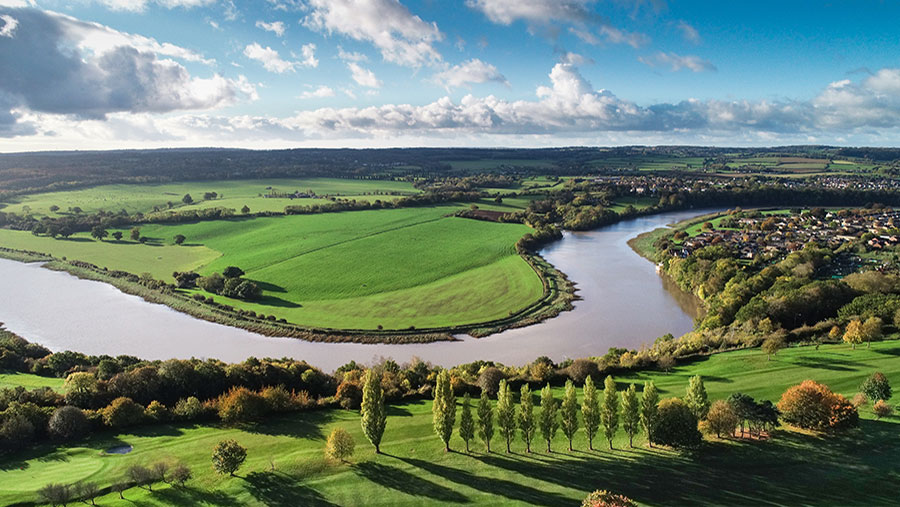Opinion: Farmer-led groups hold key to future ‘green’ income
 The River Avon © Chris Sharp/Adobe Stock
The River Avon © Chris Sharp/Adobe Stock On my work trips to France I was always struck by the willingness of farmers there to work together.
From large co-operatives to smaller, locally based structures (I still remember what a GAEC stands for, and it’s nothing to do with cross-compliance), being open to neighbours seemed to come easily.
We in Britain had co-ops too, of course. I am the proud owner of an old West Cumberland Farmers (WCF) tea bag tin that will one day feature on Antiques Roadshow.
And when the rep’s car or the feed wagon came into the yard, what they brought was buying power – the many can get a better price than the one.
See also: How trading natural capital credits could work for farmers
Happily, WCF is still going, and we have producer organisations, machinery rings and farmers’ clubs to show the Brits can co-operate too.
But normally these don’t ask you to share information or plan together what you will do. And they don’t ask you to work on a “landscape scale”, to use Environmental Land Management (ELM) speak.
The Game & Wildlife Conservation Trust (GWCT) can claim to have pioneered this well before ELM.
Its work on the grey partridge showed an obvious fact – these iconic birds don’t get to a farm boundary and go “OK, we’d better stop here”. They need bigger spaces to flourish – whole landscapes.
GWCT promoted farm clusters – groups of farmers working together for local environmental objectives, from species conservation to water protection.
This approach was picked up in Countryside Stewardship (CS) in 2015 to include “facilitation fund” farmer groups, paid for through CS.
Bureaucracy and inflexibility
The weight of bureaucracy involved and the inflexibility in using the funding have led many to go back to first principles.
In my region, farm cluster groups are now funded by CS and others, such as water companies, and run by a range of bodies across the wildlife, countryside and farm business management spectrum.
There is a danger in this of farm clusters becoming the go-to means for some to achieve their own objectives, and with its message of “public money for public goods”, I fear ELM encourages this.
Groups should be farmer led and inspired, setting up first, and getting outside help and funding only if they want it.
Coping with agricultural transition and getting to grips with ELM and new private funding is an ordeal for individual farmers.
The cluster approach highlights the advantage in working together of strength in numbers – and the new Environmental Farmers Group (EFG) is a great demonstration of this.
Best deals
Set up from seven GWCT farm clusters, the EFG can deliver not just species recovery and cleaner water across its River Avon catchment with its “whole catchment conservation plan”, but get the best deals in trading its 80-plus members’ natural capital with buyers looking for carbon offsetting or biodiversity net gain.
The key to this co-operative approach is that members share the risks and the benefits, as long as they do their trading through the co-op.
In an area as big as a catchment, this presents buyers such as developers and water companies with a united front – deal with us or with no one.
Now that is working together on a landscape scale that really enables farmers. It is “ELM sorted”, and it is real buying power in the market – all for £1.25/ha.
I wonder if they have any deals on big tins of tea bags?

